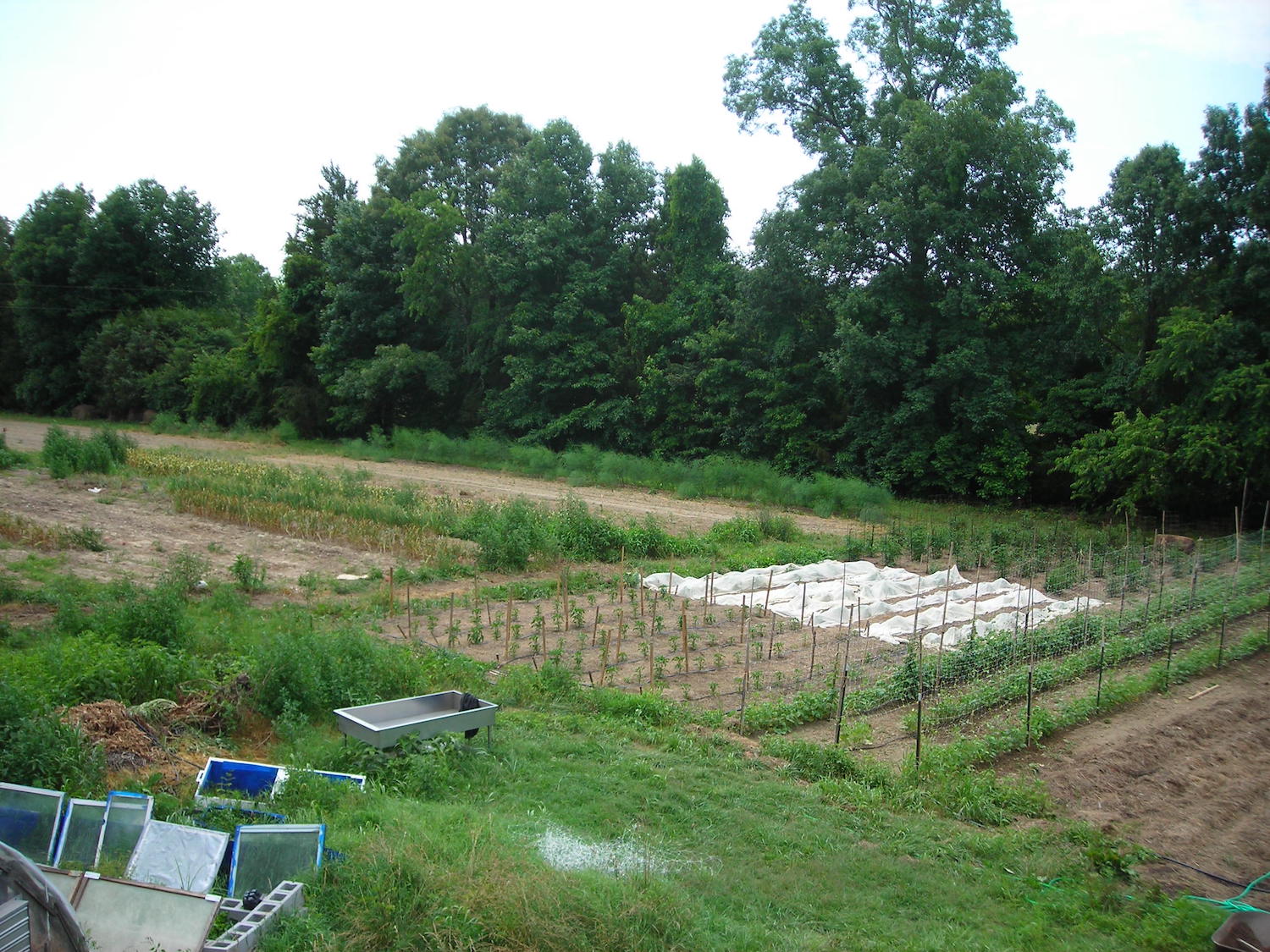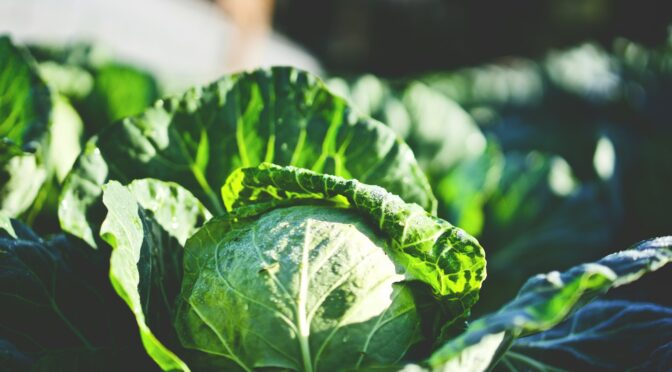July marks the start of fall planting in the gardens at Southern Exposure. We’re located in zone 7a, and while July may seem too early to be thinking about fall, it’s essential to give crops plenty of time to mature before autumn’s cold weather arrives. During July, we’re working on getting brassicas like cabbages and broccoli transplanted.
We always get questions when folks see them on the planting list during one of the summer’s hottest months. If you’ve ever wondered how we work with cool-weather crops in hot weather, here’s some advice.

Choose Fall Varieties
The beauty of open pollinated and heirloom crops is that they offer unique traits. Gardeners, farmers, and seed savers have bred some varieties specifically to tolerate the hot dry weather of late summer to produce a bountiful crop.
Some of our favorite fall brassicas:
- Waltham 29 Broccoli
- Early Flat Dutch Cabbage
- Savoy Perfection Cabbage
- Snowball Self-Blanching Fall Cauliflower
- Snowball Y Fall Cauliflower
- Red Rubine Brussels Sprouts
- Catskill (Long Island Improved) Brussels Sprouts
Collards and kale are also great choices for fall brassica crops and perfect for direct sowing. They are quicker to mature, cold hardy, and collards are easy to grow in areas where it’s too hot for good cabbage production.
Collards
- Champion Collards
- Georgia Cabbage Collards
- Georgia Green (Georgia Southern, Creole) Collards
- Granny Hobbs Collards
- McCormack’s Green Glaze Collards
- Purple Ultracross Collards
- Variegated Collards
- Whaley’s Favorite Cabbage Collards
- White Mountain Cabbage Collards
- William Alexander Heading Collards
Kale

Time Your Plantings
Timing fall plants can be tricky. Plant too early and you’ll have broccoli trying to head up in the hot weather of late summer or early fall. Plant too late and winter will arrive before your crop matures.
To plan your plantings, you’ll need to know your average first frost and your crop’s days to maturity. Count back based on your days to maturity from your first frost.
However, you also need to keep in mind that plants grow more slowly in the fall as the day length dwindles. To take this into consideration, you want to add 14 days to the days to maturity time for any variety you’ll direct sow and 14 to 28 days for any variety you will be transplanting. This longer period helps account for setback and transplant shock.
Transplant Well-Developed Seedlings & Harden Them Off Carefully
Transplanting in any season can be rough on plants, but it’s even worse during the hot summer months. Good quality soil and attention can help you grow well-established seedlings that will better tolerate transplanting.
Before you set your plants out, it’s essential to harden them off. This means that you slowly adjust them to the temperature, sunlight, and wind outdoors before planting them out in the garden. Start by setting them out for just an hour or two each day out of direct sunlight and then slowly increase the time and sunlight exposure over a couple of weeks.
Learn more about hardening off here.
Keep a Thick Layer of Mulch Around Plants
A heavy layer of mulch will insulate the soil. It keeps the soil cool and holds in moisture. It also suppresses weeds, which will compete with crops for water and nutrients. Add at least two inches of mulch and add as necessary to cover bare or thin spots as the mulch breaks down.
Water Consistently
Cool weather crops need a steady supply of moisture to grow well in late summer. Try to water deeply 4 or 5 times per week as they’re getting established. Check the soil frequently to make sure it stays moist.
If possible, it’s best to water in the early morning or evening. These cooler time periods will allow more moisture to seep into the soil before evaporating.

Offer Shade if Possible
Shading crops, especially when they’re first transplanted, can reduce the stress on your seedlings. You can use shade sails, easy-up pop ups, or low-tunnels with lightweight row cover. Whatever you choose, it’s most effective to position it so that it provides protection from the harsh afternoon sun when temperatures are highest.
If available to you, low tunnels are likely the most versatile, easy-to-use option. They also provide protection from insects like cabbage whites. As summer gives way to cooler temperatures in fall, you can swap out your shade cloth on the tunnels for a lightweight row cover for additional frost protection.

